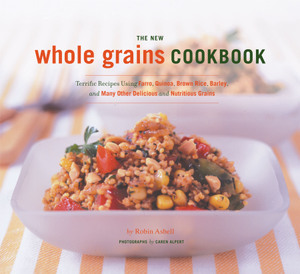
This may be a longish post - but stay with me - you will learn how to effectively lift weights to bring your sugar levels down. Here's how:
The major problem a type 2 diabetic has is the insensitivity of the cells of their body to the effects of the insulin that their body is producing. This insensitivity is called "insulin resistance". Exercising the muscles of the body can greatly increase the sensitivity to insulin, and as that sensitivity is increased it brings sugar levels down naturally. Doctor Richard Bernstein has developed a way to exercise the body that greatly improves the body's sensitivity to insulin, and this is covered below:
"Insulin resistance, which is the hallmark of Type II diabetes,
is enhanced in proportion to the ratio of abdominal fat to lean body mass. One of the best ways to improve this ratio in order to lower your insulin resistance is to increase your lean body mass. Therefore, for most Type II diabetics, the most valuable type of exercise is muscle building."
 |
| If you eat this....ya gotta do what the little guy is doing... |
"First, what is muscle-building exercise? Resistance training, weight training (weight lifting), or gymnastics would all qualify."
"Aerobic exercise is exercise mild enough that your muscles are not deprived of oxygen. When muscles exercise aerobically, they don't increase much in mass and they don't require as much glucose for energy. Anaerobic exercise deprives the muscles of oxygen; it tires them quickly and requires about fourteen times as much glucose to do the same amount of work as aerobic exercise."
"The blood sugar drop during and after continuous anaerobic exercise will be much greater than after a similar period of aerobic exercise."
"The efficiency of your own (or injected) insulin in transporting glucose and in suppressing glucose output by the liver becomes considerably greater when anaerobic exercise is incorporated into your program."
"Anaerobic metabolism produces lactic acid, which accumulates in the active muscles, causing pain. Since the acid is cleared almost immediately when the muscles relax, the pain likewise vanishes upon relaxation. You can identify anaerobic exercise by the local pain and the accompanying weakness. This pain is limited to the muscles being exercised, goes away quickly when the activity stops, and does not refer to agonizing muscle cramps or to cardiac pain in the chest. Anaerobic activities can include weight lifting, sit-ups, climbing, chinning, push-ups, running up a steep incline, uphill cycling, gymnastics, using a stair climber, and so forth, provided that these activities are performed with adequate loads and at enough velocity to cause pain or transient discomfort."
"You can achieve continuous anaerobic activity, but on a rotating basis. After you finish exercising certain of your abdominal muscles by doing sit-ups, for instance, you switch to push-ups, which focus on various arm and shoulder muscles. From there, you go to chinning. Similarly, different weight-lifting exercises also focus on different muscle groups."
 |
| Don't know who this guy is.....but he looks good in green.... |
"The buildup of muscle mass lowers insulin resistance and thereby facilitates both blood sugar control and weight loss."
"The most productive way to perform an anaerobic exercise is to tire a particular group of muscles as quickly as possible, and keep them tired during the course of the exercise."
"By placing maximum demands on your muscles at first, you put yourself into the anaerobic (or oxygen-deprived) state right off. Then by slowly progressing to lighter weights, you force your muscles to work continuously in the anaerobic state and thereby build them."
 |
The Best Exercises To Use Are Big, Compound
Movements That Recruit A Lot Of Muscle Mass. |
"I start out with as much resistance as I can handle, and then ease up."
"This is how it works: Let's say you're performing curls. These involve sitting at the edge of a bench or chair and flexing your arms at the elbows with weights in each hand. You start with the heaviest weight that you can lift 3 - 4 times."
"By the time you've lifted it 4 times, your muscles are tired and you can't lift it any more. You immediately pick up the next lighter weight and do as many repetitions as you can (say 3 - 4), and so on down through lighter and lighter weights until you get to a total of about 20 repetitions. You might find that you can get out 21, or maybe you can only manage 19 - that's fine.
The idea is that after the first few repetitions, your muscles are tired and they're working while they are tired, which is what stimulates muscles to build more mass."
"When you perform anaerobic exercise, your muscles break down for the first 24 hours, but then they build up over the next 24 hours."
"Once you've done your repetitions for a particular muscle group, you don't need to do that exercise again until the day after tomorrow. You immediately go on to the next exercise. In this way, you can accomplish considerably more in a shorter time frame."
"You can accomplish a more thorough and sensible workout in 15 - 30 minutes than you can in an hour and a half of conventional, less strenuous aerobic activity."
excerpted from Dr. Bernstein's Diabetes Solution
by Dr. Richard K. Bernstein
Click here for a great weight training site for women















